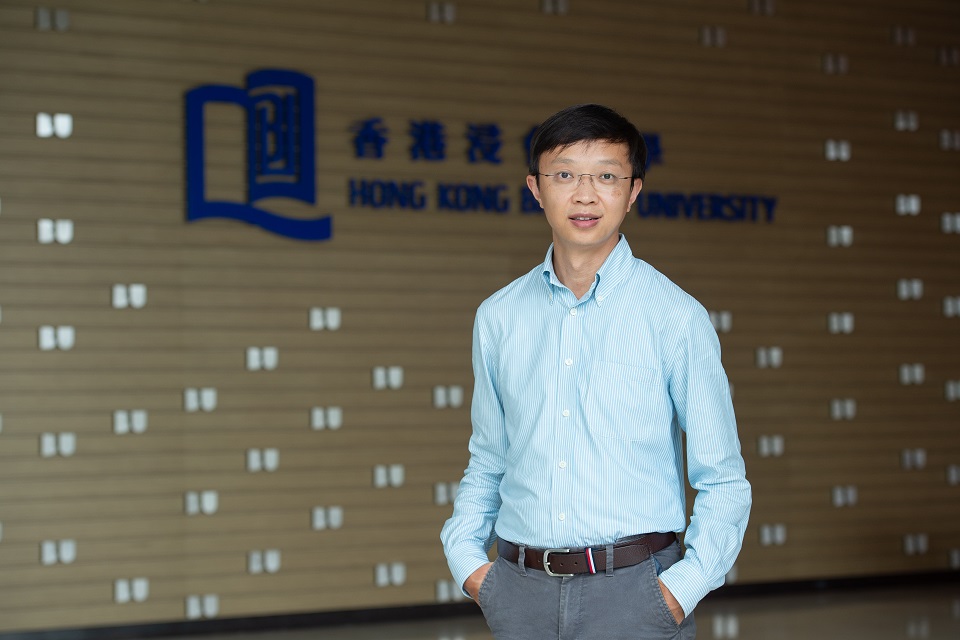Discover HKBU
Improving Internet of Things with blockchain
23 Jun 2023


What do smartphones, fitness trackers and self-driving cars have in common? They are Internet of Things (IoT) devices that connect and exchange data through the web. While IoT and its network of smart devices have yielded great benefits to the way we live, they also introduce new problems, says Dr Henry Dai, Associate Professor of the Department of Computer Science.
The term IoT describes the network of physical objects, which are connected to the Internet, in collecting and sharing data. Not only is IoT increasingly deployed in our daily life in a myriad of smart home products, but the technology is also applied in industrial settings, ranging from product-quality monitoring and preventive maintenance to asset tracking.
However, insecure IoT systems can be hacked, leading to data being lost or exploited. There are also privacy, security and interoperability issues to consider. To tackle these challenges, Dr Dai and his team have been researching into the integration of IoT and a platform known for its security features – the blockchain.
Adding security to IoT data
Blockchain is a shared ledger of transactions across a peer-to-peer network. Dr Dai, who has more than 10 years of research experience in IoT, blockchain and big data analytics, believes that this technology is an ideal key to address the problems of IoT. “Blockchain is traceable, transparent and immutable. It is also pseudonymous, so the identity of the person making transactions is nearly unknown,” he says.
He proposes implementing a blockchain for IoT architecture, where the blockchain serves as middleware to connect IoT applications and the underlying systems. As the IoT data is sent to a private blockchain network, this design can build trust among the users. With each transaction traceable and verified, the integration of blockchain and IoT can improve the security and interoperability of IoT systems.
Yet, current blockchain systems have some constraints. The arrival of IoT has accelerated transaction volumes, but existing blockchains process transactions at a much slower rate than networks such as Visa or PayPal. To improve the overall performance of blockchain, Dr Dai and his team developed an intelligent micro-payment network (MPN), which allows users to conduct multiple transactions.
“The MPN can support several thousand transactions per second and maintain compatibility with existing blockchains. In other words, there is no need to make any modifications to the current blockchain networks,” says Dr Dai. “The MPN also enables cross-chain transactions, making it possibly the most feasible solution to the blockchain IoT systems.”
The smart way forward
Dr Dai and his team are exploring the potential applications of IoT and blockchain in medical and healthcare sectors. He says: “The COVID-19 pandemic revealed the vulnerabilities in our healthcare system as well as the intense pressure faced by healthcare professionals. The integration of blockchain with IoT will bring benefits to healthcare providers and patients.”
Taking the example of telehealth, he says that IoT devices like biosensors and medical wearables can enable remote patient monitoring. The highly personal data collected from the patients will be stored on the blockchain to protect their privacy while allowing healthcare professionals who have permissions to access the data and respond quickly to new situations.
The next step in telehealth development is smart hospitals. Dr Dai says, “A smart hospital will leverage data and technology including RFID tags and IoT devices to improve its operations and the patients’ well-being. In addition, the use of blockchain in smart hospitals will ensure the traceability and authenticity of medical data.”
As technology continues to advance, new capabilities to IoT and blockchain will emerge. “Instead of merely collecting data, future IoT devices may possess the capability of analysing data and making decisions. Blockchain, on the other hand, may transition to greener consensus algorithms and become more environmentally sustainable,” Dr Dai says, adding that IoT and blockchain will also play an important role in the development of supply chains, smart manufacturing and the metaverse.
He believes AI-generated content technology is likely to be adopted by IoT, but this may raise trust concerns. He says, “We have to keep in mind that a single technology cannot solve all the problems we meet. The future will hinge on the combination of multiple technologies that complement one another.”